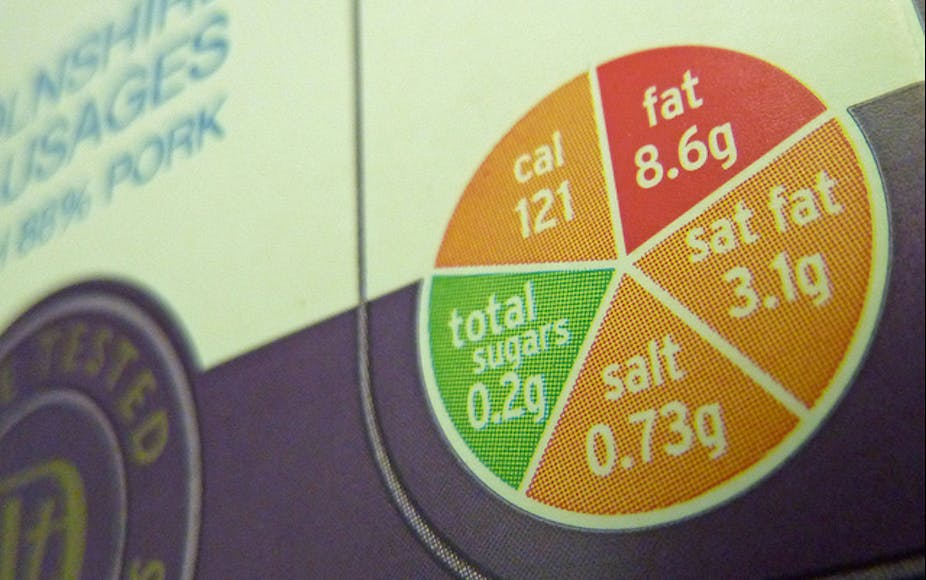The Federal Government has defied expert advice and rejected a traffic light food labelling system for packaged foods, saying there wasn’t enough evidence to show it would give consumers the information they needed to make informed choices.
Front-of-pack traffic light labelling, which uses green, amber and red to show, at a glance, the relative levels of fat, saturated fat, sugar and sodium in a product, was one of the key recommendations of the independent expert Food Labelling Review, chaired by former Australian Health Minister Dr Neal Blewett.
Under the Blewett proposal, the standard nutrition information panel on the back of the pack would stay in place.
Australian public health experts and consumers overwhelmingly support traffic light food labelling. The only real opposition has come from large food manufacturers who claim such a system would over-simplify nutrition and potentially mislead consumers by making things too simple.
But what they are really opposed to is a system that could lead people to buy fewer of their unhealthy products.

Benefits and evidence
Public health experts developed the traffic light system in the UK in 2006 in an effort to help combat rising levels of obesity and diseases such as heart disease, stroke and diabetes. The United Nations recently recognised the threat of these non-communicable diseases as a global public health crisis, and called for decisive preventative action from government leaders.
There are three main benefits to traffic light food labels:
1) Only a small percentage of the population read the current back-of-pack nutrition information panels and even fewer understand it. Research in Australia shows nine out of 10 people prefer traffic light labels to other labelling formats and find it much easier to understand.
Despite the government’s claim, there is clear evidence to show traffic light labels would help increase consumer awareness and understanding of the nutritional content of food. This is particularly true for people from low socioeconomic groups who are most at risk of poor health.
2) Traffic light labels would provide an incentive for food manufacturers to reformulate their products to make them more healthy so they can display more green and amber lights, and fewer red lights.
Even with small reformulations – to decrease levels of salt in certain products, for instance – the impact on population health can be substantial. And this can happen without consumers having to change what they buy.
3) Traffic light labels can lead people to choose healthier foods.
There is very little evidence of how traffic light labels affect what people actually buy. Our research has looked at supermarket sales in the United Kingdom (after traffic light labels were implemented in one of the big supermarket chains) and in Australia (where we did a small trial of traffic light labels in an online grocery store). In those two studies, we weren’t able to detect a change in sales as a result of the new traffic light labels. But the studies were just a few weeks long, were only on a limited set of home brand products and there were no education campaigns to accompany the introduction of the new labels.
In follow-up studies, we did some modelling which showed it would only take 2% of people to switch to healthier choices for traffic light labels to deliver the type of health benefits that would save the government money in the long term. If traffic light labels were displayed on all packaged foods and were accompanied by a social marketing campaign to help inform consumers, these benefits seems very achievable.

It’s worth the cost
There would be a small cost to government to administer the scheme and monitor compliance. Since the government already monitors the current labelling system, there’s unlikely to be a significant cost increase in the long term.
There would also be a cost to food manufacturers to redesign their product packaging to incorporate the traffic light labels. But food manufacturers are constantly redesigning their product packages – if there was a long enough lead time before the new labels were introduced, the cost would be small. When you think about how many billions of packaged food products are sold each year, the additional cost per item would be minuscule.
Next steps
The Federal Government’s decision to reject traffic light labels demonstrates a lack of political will for tackling obesity and preventing non-communicable diseases. Perhaps more worryingly, it’s yet another indication of the strong influence of corporate interests on government.
In Europe, the food industry reportedly spent a staggering €1 billion successfully lobbying the European parliament to reject traffic light labels. The fact that the Australian Federal government has now also rejected traffic light labels is another big win for manufacturers of unhealthy food.
But the fight for traffic light food labels isn’t over. The commonwealth, state and territory health and food ministers will meet next week to discuss and vote on which labelling recommendations to propose to the Council of Australian Governments.
There is hope that the ministers will acknowledge the strong public health arguments and overwhelming public support in favour of traffic light labels and see this proposal for what it is: a highly cost-effective policy that is likely to reduce the health and economic burden of non-communicable diseases.

